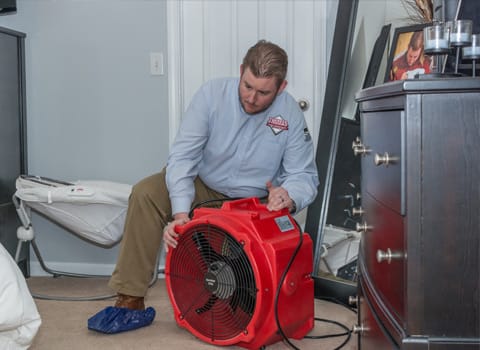Unleashing the Power of Heat: The Ultimate Guide to Pest Control Heat Treatments

Image Source: Google
Pest infestations can be a nightmare for homeowners and businesses alike. Traditional pest control methods often involve the use of harmful chemicals that can be dangerous to humans and pets. If you are looking for the best pest control heat treatment then, you can contact Presidio Pest Management.
However, there is a more effective and environmentally friendly alternative: heat treatments. In this ultimate guide, we will explore the power of heat as a pest control solution and how it can help you get rid of unwanted pests for good.
The Science Behind Heat Treatments
Heat treatments are a non-toxic method of pest control that involves raising the temperature of a space to a level that is lethal to pests, but safe for humans and pets.
The heat penetrates cracks, crevices, and other hiding spots where pests may be living, effectively eliminating all life stages of the infestation, from eggs to adults. This method is particularly effective for eliminating bed bugs, cockroaches, and other hard-to-kill pests that have developed resistance to traditional pesticides.
How Heat Treatments Work
- Specialized heating equipment is used to raise the temperature of the infested area to between 120-140 degrees Fahrenheit.
- The heat is evenly distributed throughout the space to ensure that all areas where pests may be hiding are heated to the lethal temperature.
- The high temperature is maintained for several hours to ensure that all life stages of the pests are eliminated.
- After the treatment is complete, the space is allowed to cool down, and the area is thoroughly inspected to ensure that the infestation has been eradicated.
The Benefits of Heat Treatments
There are many benefits to using heat treatments as a pest control solution, including:
Efficiency
- Heat treatments can eliminate an entire infestation in just one treatment, saving time and money compared to multiple chemical treatments.
- Heat penetrates deep into cracks and crevices where pests may be hiding, ensuring that the entire infestation is eradicated.
Safety
- Heat treatments are non-toxic and pose no risk to humans, pets, or the environment.
- There is no need to evacuate the premises during a heat treatment, making it a convenient option for homeowners and businesses.
Effectiveness
- Heat treatments are highly effective at eliminating even the toughest pests, such as bed bugs and cockroaches, that have developed resistance to traditional pesticides.
- Heat can kill pests at all life stages, including eggs, ensuring that the infestation does not return.
When to Use Heat Treatments
Heat treatments can be used to eliminate a wide range of pests, including:
Bed Bugs
- Heat treatments are the most effective method for eliminating bed bug infestations, as the high temperatures can penetrate into the mattress, box spring, and other hiding spots where bed bugs may be living.
- Bed bugs are becoming increasingly resistant to traditional pesticides, making heat treatments a more reliable option for complete eradication.
Cockroaches
- Heat treatments are highly effective at eliminating cockroach infestations, as the high temperatures can reach into cracks and crevices where cockroaches may be hiding.
- Cockroaches are known to carry diseases and can trigger allergies, making it essential to eliminate them quickly and effectively.
Other Pests
- Heat treatments can also be used to eliminate other pests, such as ants, spiders, and fleas, providing a comprehensive pest control solution for your home or business.
- By using heat treatments, you can ensure that your space is pest-free without the need for harmful chemicals that can pose risks to your health and the environment.
Conclusion
Heat treatments are a powerful and environmentally friendly solution for eliminating pest infestations in homes and businesses. By harnessing the power of heat, you can effectively eradicate pests such as bed bugs, cockroaches, and more, without the need for harmful chemicals.